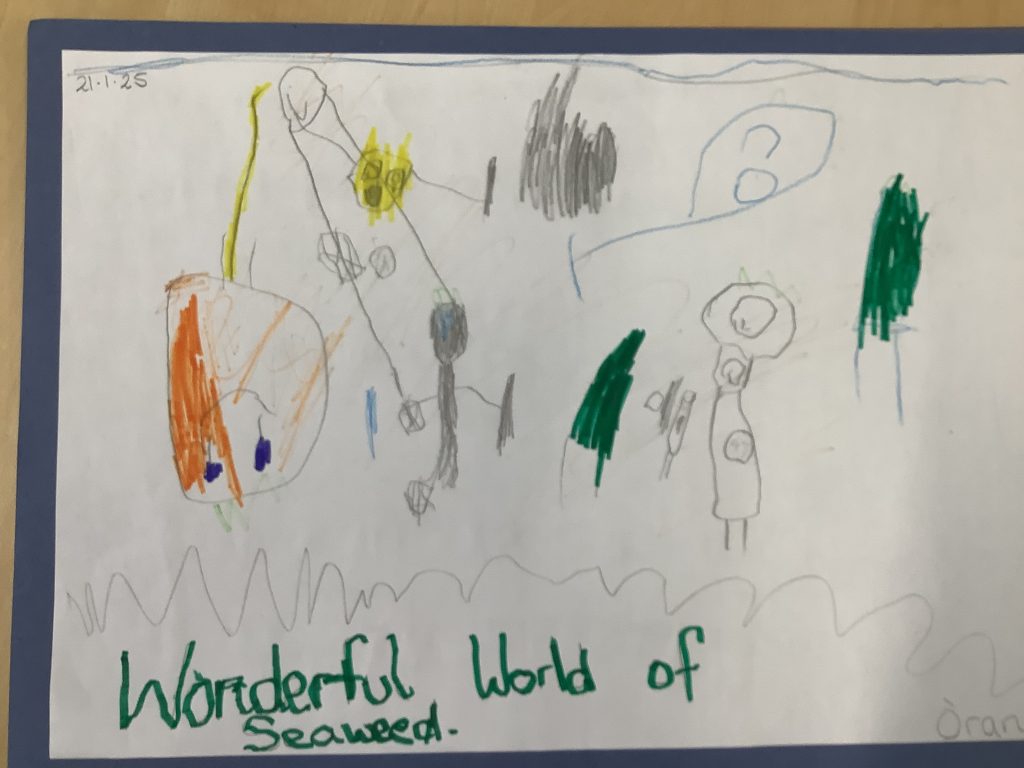Wonderful World of Seaweed

Marine Biologist Visit – The wonderful world of seaweed
We invited Mia in from Scottish Association of Marine Science and we were recalling facts from her last visit where we learned about dolphins and whales. We wanted to share our seaweed safari learning journey with her. We told her that we knew seaweed was a very healthy food that gave us lots of goodness for our bodies, that there are different types of seaweed and that we can use seaweed to create art. We shared with her about food chains and how we made urchins to eat the seaweed and otters to eat the urchins. The sun gives energy to the seaweed that passes to the other animals. We told her about the beach habitats we created and that seaweed is a habitat too. Mia was happy with how much we shared with her.
With Mia we looked at different types of seaweed through magnifying glasses and saw lots of patterns. We really enjoyed learning a lot of facts from Mia. She talked about seaweeds that you can’t see with the naked eye or magnifying glass and that we would need a much stronger microscope. They had tricky names to say and spell: Netrium digitus, Pseudopediastrum boryanum. She told us that whales eat krill which is a small crustacean fish. When the whales poo nutrients are released into the sea and those nutrients are needed for seaweed to grow. We made a link with how seaweed helps strawberries grow.
Seaweed has so many uses. Some of these are: fish food, human food, fertiliser, (Kelp) Seaweed is a vegetable.
Mia told us all about Algae growth in Antarctica, it’s called Snow Algae and grows on snow. It needs penguin poo to grow. We learned about satellites and how they are taking pictures of the Earth to help protect it. We looked for penguin poo on big satellite map of Antarctica and that was great fun.
Mia suggested that we create our own seaweed using our imaginations.